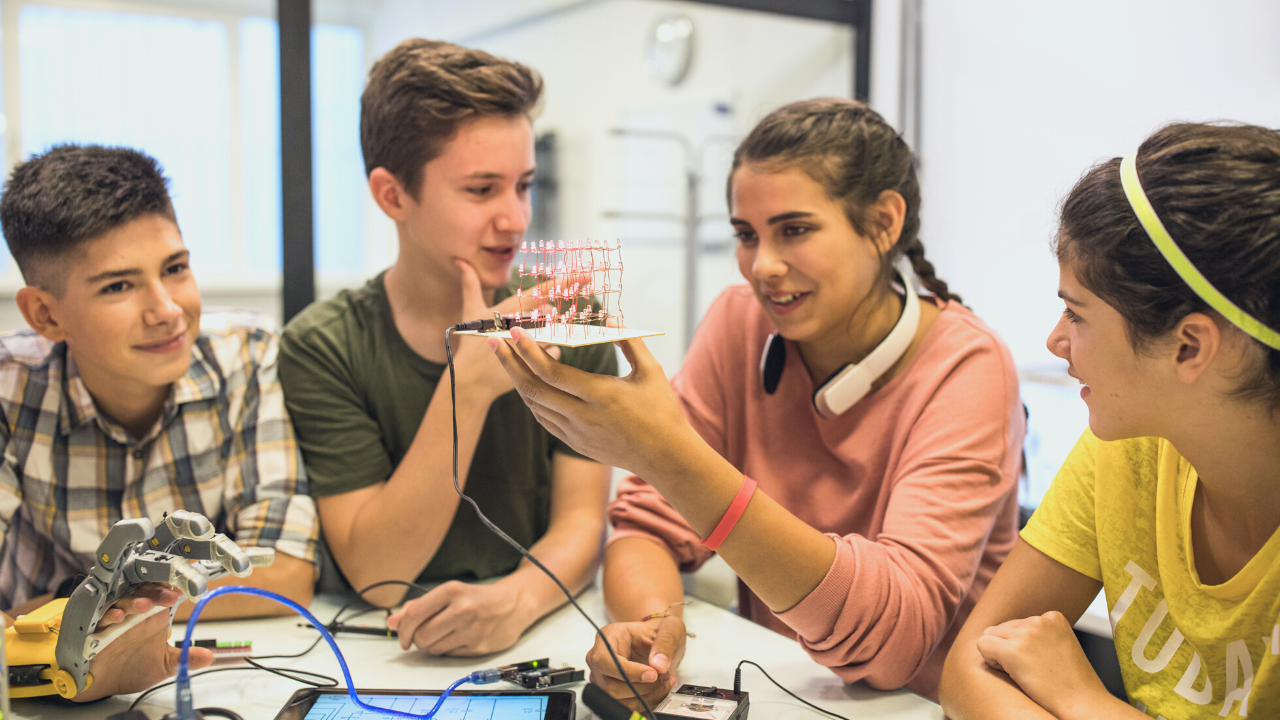JASON Learning’s Impact in Portsmouth, VA
The United States workforce does not look the same as it did ten years ago or even two years ago, pre-pandemic. Workforce culture, shifts in in-demand industries, and highly sought-after skills are effectively becoming very fluid in order to keep up with rapidly changing industry demands (Karoly et al., 2019). Is the next generation, or even the current generation of the workforce, prepared for these new and advancing careers? How do K-12 education systems and workforce development entities keep up?
“America is home to some of the world’s brightest and most ambitious students, and we owe it to them to set them up for success.”
– U.S. Secretary of Commerce, Gina Raimondo
While new and advanced career opportunities are exciting and enticing to some, the reality is that they can be very intimidating and alienating to those who do not have equal access to education that is current with workforce demands. New career pathways consistently emerge in STEM, and new technological layers are added to existing positions. To consistently fill these high-value job positions, K-12 education systems, higher education institutions, community organizations, and local industries need to align their resources and efforts to ensure that students are ready to enter high-demand, well-paying careers.
“To extend learning beyond school walls and increase its relevance and effectiveness to best prepare students for careers, there must be strong relationships between and among schools and their communities.”
– Superintendent of Portsmouth Public Schools, Dr. Elie Bracy
Students need equitable access to knowledge and skills that will enable them to obtain sustainable employment in the region where they grew up. While some students will choose to move away from home after graduation, those who wish to stay should be prepared with the knowledge and skills required for the region’s employment opportunities. Ensuring that K-12 education and local industries are intertwined will not only cultivate a powerful and skilled local workforce but also:
- Strengthen the economy and increase the value of the area
- Prepare job candidates with the necessary skills, qualifications, and certifications
- Expose students early to viable career pathways
- Strengthen the area’s workforce talent pool
- Lead to more opportunities for widespread growth
One area that is active in preparing its students for these changes in STEM workforce demands is Portsmouth, Virginia. In 2021, if one were to search for jobs within 25 miles of Portsmouth on Indeed, one would have found over 350 full-time, entry-level advanced manufacturing job openings, with more than half of those with starting salaries of over $35,000/year. Employers needed help finding qualified candidates for these positions because of the increasingly technical and highly-skilled nature of the roles. If these weaknesses were not addressed, the region risked losing these emerging industries and economic opportunities to areas with a better-prepared pool of workforce talent, deepening rather than resolving the existing economic challenges.
After seeing the evident demand for skilled individuals in the Advanced Manufacturing field, Portsmouth Public Schools collaborated with JASON Learning (a partner of Portsmouth for nine years) to create pathways for students to begin filling these entry-level advanced manufacturing positions. The SPARK program (Setting Pathways that Activate Real-World Knowledge) was supported by a GO Virginia Region 5: Economic Growth and Diversification grant. Thanks to the contribution, PPS students can learn from a high-quality, relevant, and engaging Advanced Manufacturing curriculum that supports local career opportunities in designing, building, and maintaining the devices and infrastructure that support our ever-changing world.
Instead of letting the lack of existing STEM and CTE curricula widen the divide between high school graduates and local career opportunities, Portsmouth used it as an opportunity to strengthen the connection between K-12 and industry. This effort enabled high school juniors and seniors to prepare for immediate entry into the workforce upon graduation—helping to address the critical shortage of skilled workers and amplifying the growth of one of the region’s priority industry clusters.
The modern trend of manufacturing processes and work environments requires employees to bring different skills and mindsets to their first day than traditional manufacturing techniques. These skills are best developed through a strong foundation in STEM and “STEM thinking” within the existing K-12 education system. When paired with highly tuned, localized courses in high school, we can begin to bridge the divide between school learning and the needs of local employers to ensure equitable access for all students to these new and exciting career pathways.
Co-written by Eleanor Smalley & Morgan Cline
***
Reference
Karoly, L.A., Whimpkey, K., & Zaber, M.A. (2019). Reimagining the Workforce Development and Employment System for the 21st Century and Beyond. Rand Corporation, https://doi.org/10.7249/RR2768 Retrieved December 13, 2022, from https://www.rand.org/pubs/research_reports/RR2768.html.
United States Department of Education. (2022). U.S. Department of Education Launches New Initiative to Support Career-Connected Learning and Increase Job Pathways for Young Americans. Retrieved December 6, 2022, from https://www.ed.gov/news/press-releases/us-department-education-launches-new-initiative-support-career-connected-learning-and-increase-job-pathways-young-americans



